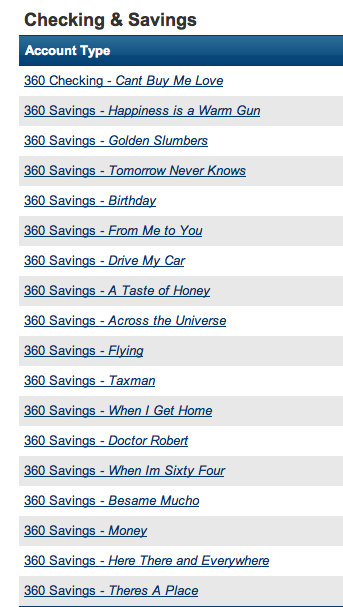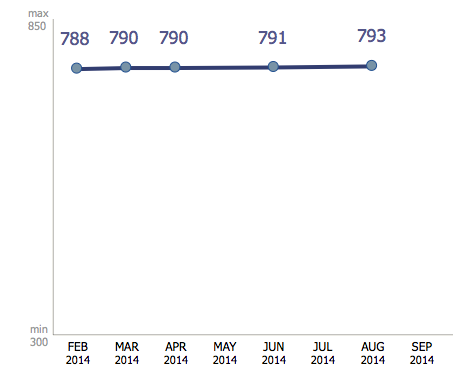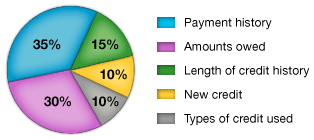“The Envelope System” is a financial planning method that’s simple enough to follow and easy enough to adhere to. Take a bunch of envelopes and write the categories that every purchase you make could be placed into. Groceries, gas, school clothes, cable, cell phone, rent, etc. 10, 15, 20 envelopes. Whatever it is, when you get your paycheck you withdraw the cash, and according to the budget you made, place the appropriate amount of cash into each envelope. When you want to spend on a specific category, take your envelope, open it up, and you’ll see how much you have left to spend. You segment all your spending and when the envelope is empty, you know you’ve used up your allotment. Simple.
A step up from this though is my recommendation to use different bank accounts to achieve this system instead of placing physical cash into envelopes. For starters, you should be putting every purchase you can on a points earning credit card. Spending cash earns you no bonus and is throwing away the opportunity to earn rewards. In my case, I have a number of different bank accounts and the bank I use for the majority of my envelope system saving is ING Direct (now overseen by Capitol One 360).
Capitol One 360 allows you to create savings accounts in real time, just with a few clicks of the mouse. In fact I have 18 different bank accounts, one main checking and 17 savings, all related to a different category I’m saving for. I’ve found that segmenting and compartmentalizing out my different goals and expenses allows me to have a much greater handle on my finances.

The theme isn’t too hard to decipher. I name all my bank accounts after Beatles’ songs, with the song name connected to the category. It’s actually a creative exercise, and let’s me merge the mental and financial challenge. “Doctor Robert” for example is savings for things related to my health: Gym membership, doctor bills, health savings account. “A Taste of Honey” is the account I use to save for groceries and eating out. “Drive My Car” is saving for vehicle expenses, insurance and payments. Most of them you can probably get an idea of what I’m saving for. Some are a little tricky.
So what is the benefit of this? 18 bank accounts sounds a bit excessive doesn’t it? But it’s actually much more stable and provides even better clarity. It allows me to have a definitive number of how much I’m able to spend on certain topics. I use the monthly budget I’ve made to schedule automatic transfers each week from my checking out to the different savings accounts. (You can transfer an unlimited amount for free, from checking to savings.) I then look at what’s in the savings account to determine if I can afford something.
Heading out to the grocery store? I know what I can afford to spend by sneaking a quick look at my, “A Taste of Honey” bank account. Curious if I can get the regular oil change this month or go for the higher quality oil? I just check, “Drive My Car.” Thinking about buying some precious metals of gold or silver? “Golden Slumbers” tells me how much I have to spend. Instead of having one big account and using a general spreadsheet or, just trying to remember, (Good luck), I know exactly what I’ve got. Each month that I don’t spend what’s in that savings account, I’ve got a little bit more to devote to a future purchase and still knowing I won’t be going into debt.
It’s a simple process to set up a checking account with Capitol One 360. I’d recommend checking it out and weighing the possibilities of switching banks or having an additional bank. It’s, “the envelope system” on steroids and will do wonders to helping you spend more responsibly and save more for the future.



I love this idea, but how do you actually spend from all of these savings accounts?
Since you recommend paying for everything from a credit card, it sounds like if you went out to dinner, you would check the appropriate account to see how much money you have available for food-type things, pay for the meal using your credit card, then immediately (or very soon after) make a payment to the credit card for that amount from the food savings account?
Tim great question. It’s not as difficult as it may sound. In the example for dinner say, I’ll have an idea of what I have in my food or “eating out budget.” So when I go out to dinner, there’s no worry as to if I can afford it. Actually what you mentioned is pretty much exactly spot on. I pay for everything on the credit card and then I pay my credit bill literally the next day or two after it posts. It’s almost the same as using a debit card, but I’m getting all the points.
Great, thanks Steve! I’ve thought I little about about this before, but unfortunately, I am currently carrying a substantial balance on my credit card.
Obviously, the better I can budget the faster I can pay off that mistake. However, regarding the credit card, I had always assumed the best way to pay off my debt was to never use the card. Thinking more about it, I get cash back rewards, so using the card as much as possible while immediately paying off all of the new purchases would actually help me pay the card off faster with the “free” money.
Yep, you’re right on Tim. I think you get it. But it is all about being responsible with that card as you said. Just as I would never encourage someone who has a spending problem to open up 10 new cards. If you can get cash back, that’s great. Just make sure the numbers add up and good luck paying off that debt. You’ll feel great when you do. Check out some of the other posts here about saving money and cutting expenses.
Holy mother of pearl! I heard you on Tom Woods and was so excited to find someone else who does the digital envelope system the same way I do. We are on the same wave brother! I do it just a little different but I think if we meshed our methods it would be nearly perfect! I’m currently using USAA for banking and they allow you to create as many checking accounts as you want. I have one main account and then several sub-checking accounts such as groceries, entertainment, apparel, etc…. I automatically transfer a predetermined amount to these accounts each month or week. I setup it up once and forget it. Ok, here is how I differ. I have a debit card for each account. That allow me to spend directly from each account. So for example if I go out to eat I just direct pay the bill with my entertainment card. The beauty of this is that I never have to remember to transfer money to a single account for each purchase since I spend the money directly from that account. It is truly like the envelope system except for digital. Now the beauty of what you are doing is you are earning points every single purchase! I didn’t know you could setup all these accounts via CapitalOne 360. I have one question. Does CapitalOne allow you to have a debit card that earns points for each account? if so that would be HUGE! Steve also feel free to contact me via my email address which I’m sure you can see. I would like to have a more in dept conversation about different opportunities.
Bobby great to hear from you! I like you’re thinking. You’re right, for me the points earned on the credit cards are the big one. I do have a capital one debit card, though it’s not points earning. There are very few points earning debit cards, at least that i’ve found. Sending you an email.
Steve,
You might want to check out a program called YNAB. The budget system works mostly the same as your accounts do – allows you to see how much you have saved in each category. This would allow those that are nervous about trying to manage multiple accounts to keep their one account and still have the multiple savings and spending categories. In fact, I recommend it thoroughly on my site and is the budget program I use today (and launched me into my current quest for financial freedom). My last category count was 48 (and rising). This allows me to make a category when I have an expense I want to track so that I can get the savings even deeper. There are many other benefits as well, but I don’t want to hog your comment column.
Fred
Fred no problem at all, comment away! I’d love to hear more about it.